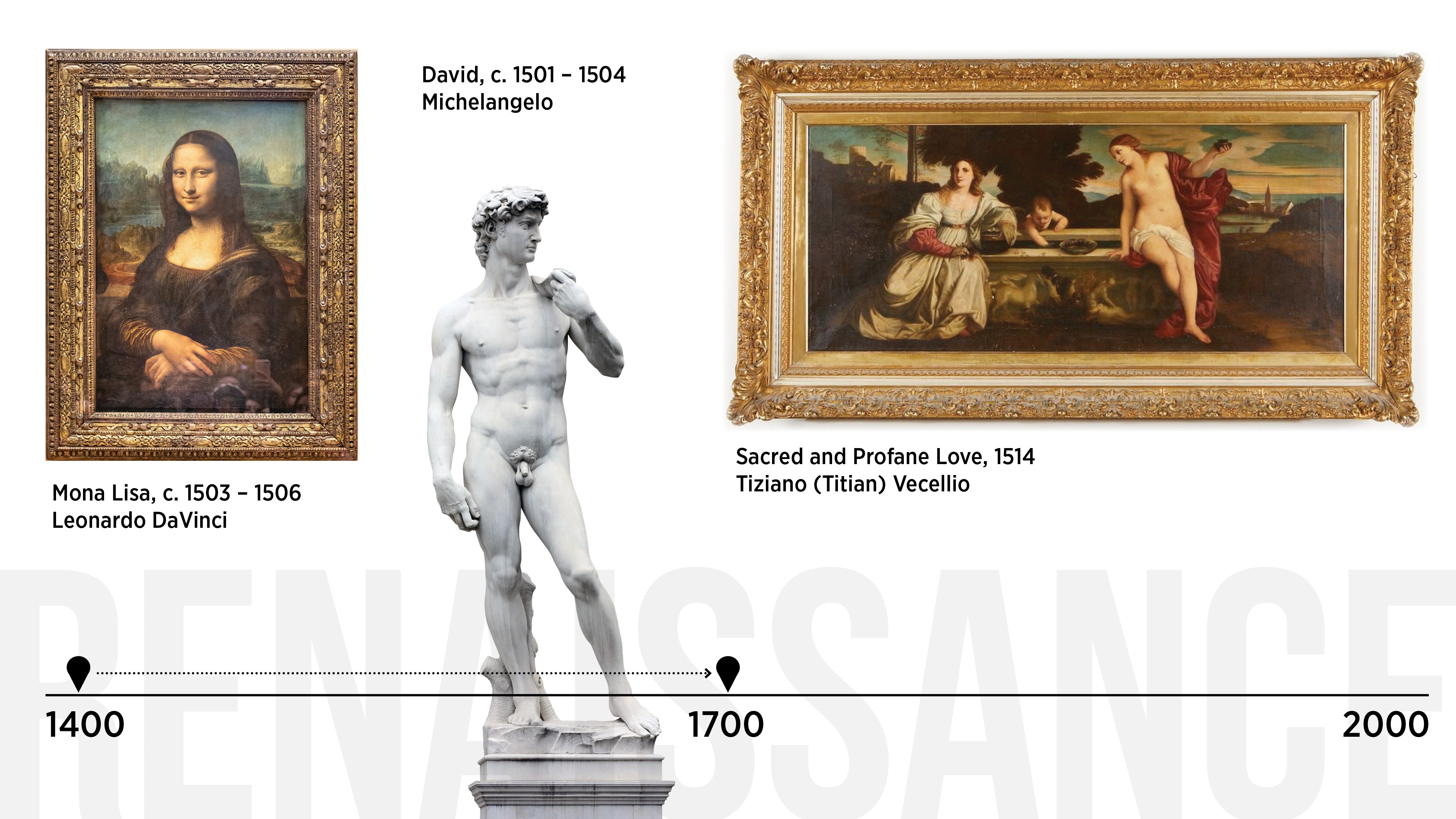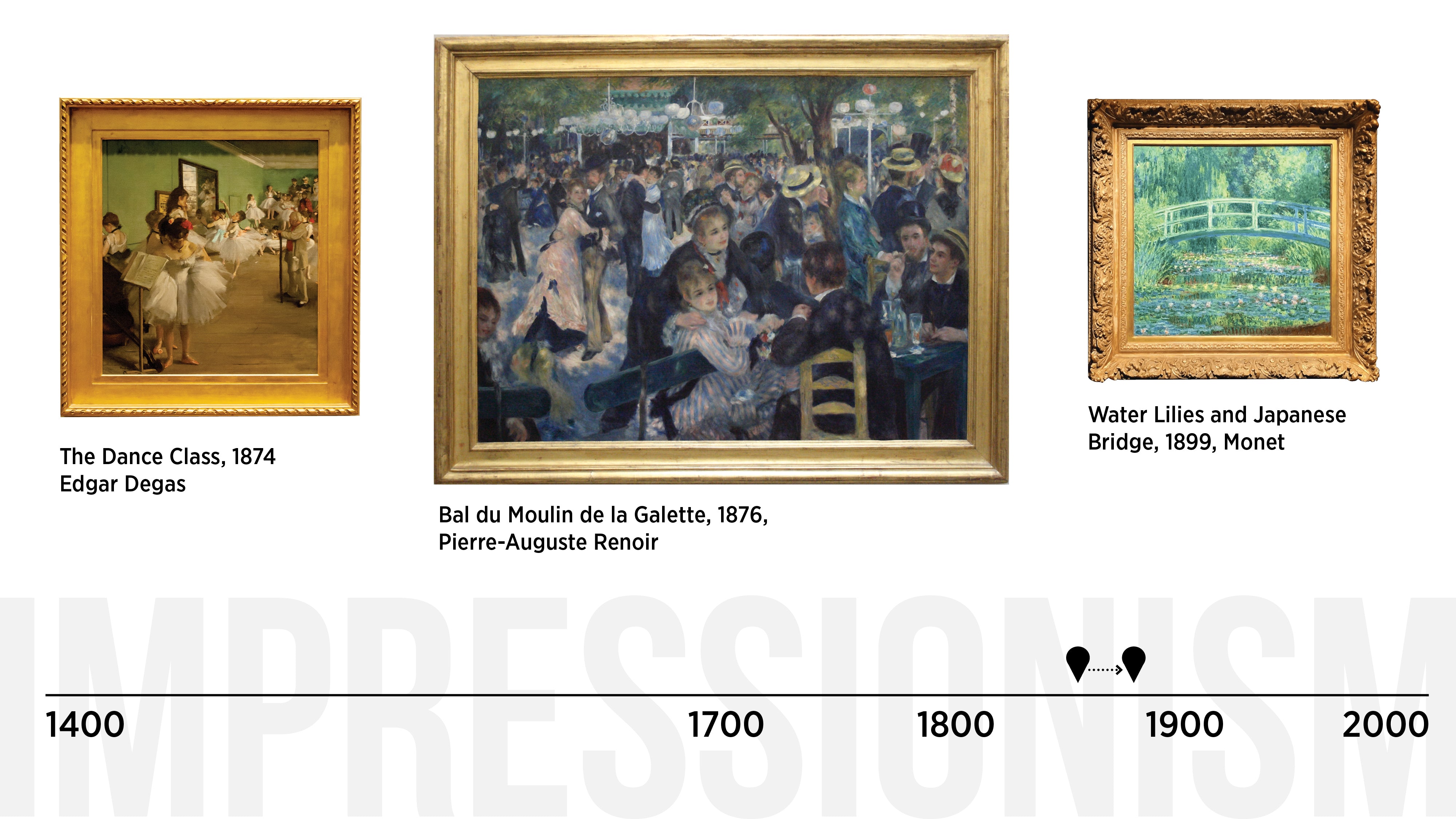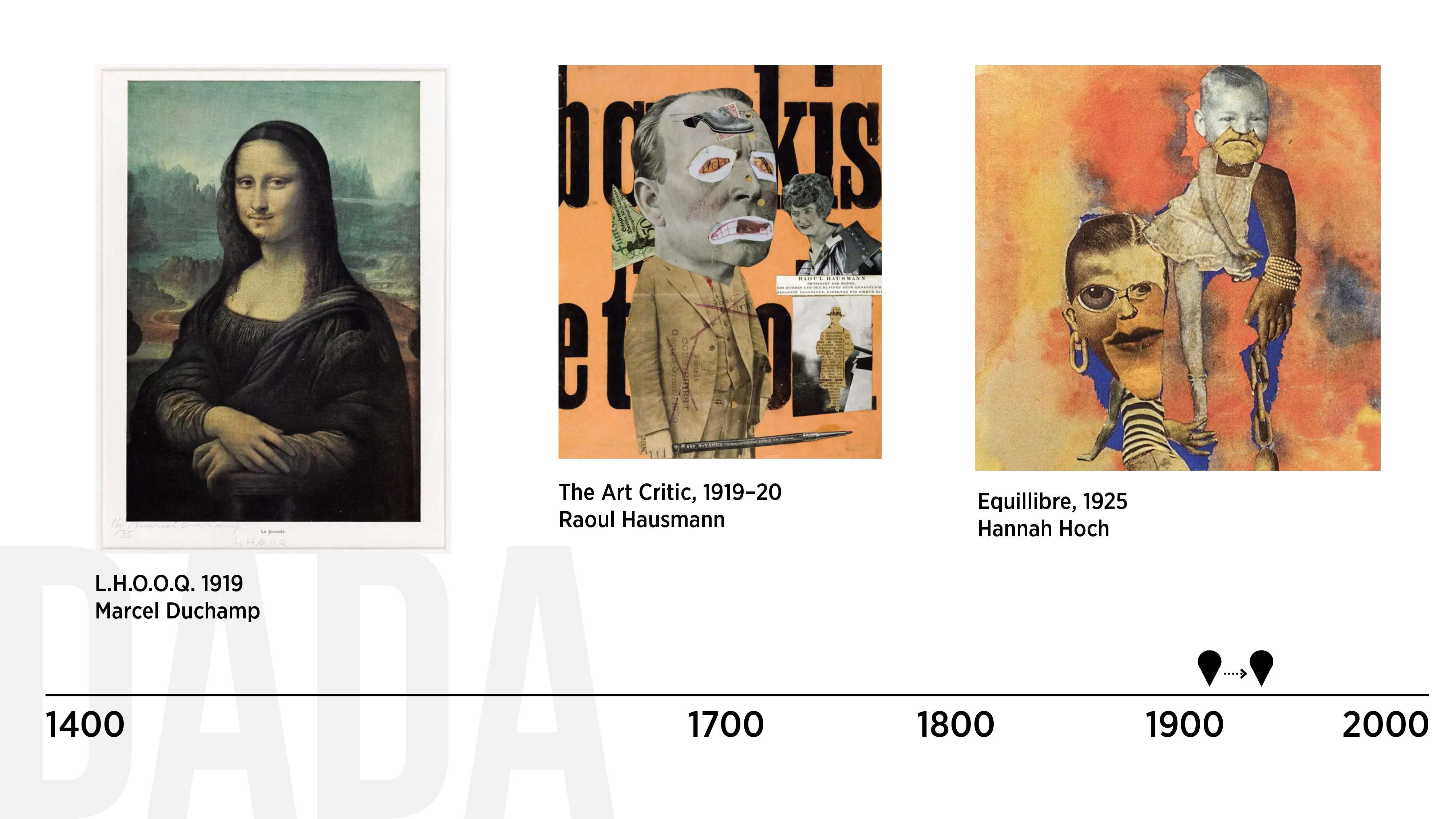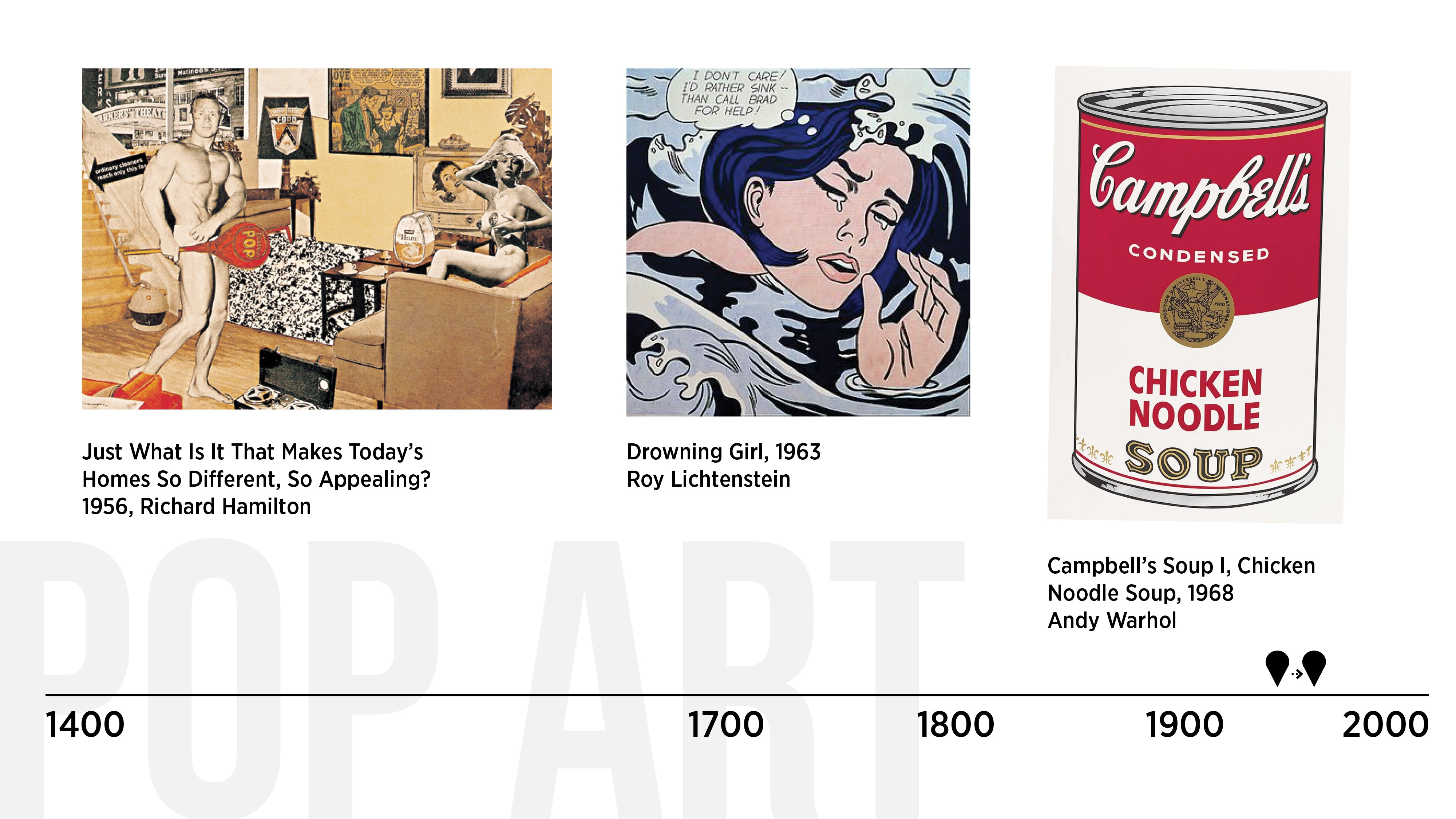ART MOVEMENTS & THEIR INFLUENCE
By Sarah-Jayne Shine

Art movements have shaped thought on a mass scale for centuries. They inspire us to look at the world differently and to talk about our lives in ways that can change mindset and behaviour. Picasso taught us to look at people from the inside out. Warhol made us think about consumer culture in our daily lives.
Looking back through Western history, particularly Europe, it's incredible to see how many art movements have made an impact on society. By tracing a timeline through different art movements, we're able to not only see how modern and contemporary art has developed, but also how art reflects its time.
Did you know that Impressionism was once considered an underground, controversial movement? Or that Abstract Expressionism signalled a shift in the art world from Paris to New York? Like building blocks, from Realism to Lowbrow, these different types of art are interconnected. As the creative pendulum swings, artistic styles are often reactions against or homages to their predecessors. By looking back at some of the most important art movements in history, we have a clearer understanding of how famous artists like Turner, Van Gogh, and Warhol have revolutionised the art world. But before I delve too deep into the minds of JW, Vincent, and Andy, let me introduce you to the mind of another...mine.
My favourite subject was without any doubt art history. It provided me with a window, an open door that led to escapism. Legitimate escapism. Escapism that is not considered taboo. I couldn’t get enough of what had gone before me and I took great comfort that tortured minds were obviously not just a 20th/21st century thing. Oh no, I learnt that artists have been mad for years. Hundreds of years. Literally centuries of years. It meant I was positively normal in comparison, well not normal... but you know, not as mad as I thought I was by any means. Certainly not as mad as basket cases with brushes that came before me. Nutters. Delicious nutters every one of them. I was hooked, dragged in and I couldn't get enough of what I was learning. I loved some movements more than others, I mean just because it’s old doesn’t mean its necessarily good, right? Perception and all…The Renaissance, Impressionism, Arts and Crafts Movement, Art Nouveau and Dada all resonated with me, and they have instinctually and subconsciously inspired me to this very day. You’ll have seen my socials recently that extol the virtues of past art movements. If not… go take a look on our Instagram or Facebook account.
Note my words carefully here though – I believe in inspiration (obviously) but disagree (strongly) with misappropriation. More on that in September’s blog.
In date order here’s a brief overview of some of my favourite art movements.

From the 14th through to the 17th century, Italy underwent an unprecedented age of enlightenment. Known as the Renaissance—a term derived from the Italian word Rinascimento, or “rebirth”—this period saw increased attention to cultural subjects like art and architecture.
Italian Renaissance artists like Michelangelo, Leonardo da Vinci, and Raphael found inspiration in classical art from Ancient Rome and Greece, adopting ancient interests like balance, naturalism, and perspective. In Renaissance-era Italy, this antiquity-inspired approach materialised as humanist portrait painting, anatomically correct sculpture, and harmonious, symmetrical architecture.
Romanticism was a cultural movement that emerged around 1780. Artists like Eugène Delacroix found inspiration in their own imaginations. This introspective approach lent itself to an art form that predominantly explored the spiritual.

Realism was a genre of art that started in France after the French Revolution of 1848. A clear rejection of Romanticism, Realist painters focused on scenes of contemporary people and daily life.
Impressionism started when a group of French artists broke with academic tradition by painting en plein air—a shocking decision when most landscape painters executed their work indoors in a studio.
The original group, which included Claude Monet, Pierre-Auguste Renoir, Alfred Sisley, and Frédéric Bazille, was formed in the early 1860s in France. Additional artists would join in forming their own society to exhibit their artwork after being rejected by the traditional French salons, who deemed it too controversial to exhibit. This initial underground exhibition, which took place in 1874, allowed them to gain public favour.

Post-Impressionism 1886 – 1905 covers many different types of art, from the Pointillism of Georges Seurat to the Symbolism of Paul Gauguin.
Not unified by a single style, artists were united by the inclusion of abstract elements and symbolic content in their artwork. Perhaps the most well-known Post-Impressionist is Vincent van Gogh, who used colour and his brushstrokes not to convey the emotional qualities of the landscape, but his own emotions and state of mind.
The late 19th and early 20th centuries were full of experimental artists and new movements. Symbolism (1880-1910) saw the dramatic end of traditional forms of art to pave way for experimental work. It made room for artists to share their emotions, thoughts and ideas with symbols, linework, forms, shapes, colour etc.
Fauvism is the style of les Fauves (French for the wild beasts), a group of early 20th-century modern artists (Matisse, Derain etc.) whose works emphasised painterly qualities and strong colour over the representational or realistic values retained by Impressionism.
The Arts and Crafts Movement started by William Morris has stood the test of time – his wallpapers are still used today! If it’s good, it will last.
Art Nouveau - 1890-1910. This French period modernised art and design – literally translating to ‘new art’– the birth of graphic design in many ways. Alphonse Mucha – Aubrey Beardsley – Toulouse Lautrec were pioneering graphic designers in my opinion. Mucha and Lautrec were commissioned to market famous actoresses and dancers at the Moulin Rouge.

Cubism is one of the most important art movements of the 20th century. Throughout the 1910s and 1920s, two artists in particular (Picasso and Braque) would use geometric forms to build up the final representation. Completely breaking from any previous art movement, objects were analysed and broken apart, only to be reassembled into an abstract form.
This period opened the doors for later art movements, like Surrealism and Abstract Expressionism, futurism etc.
The rule book was now becoming a thing of the past. Dada was a 20th-century avant-garde art movement (often referred to as an “anti-art” movement) born out of the tumultuous societal landscape and turmoil of World War I. It began as a vehement reaction and revolt against the horrors of war and the hypocrisy and follies of bourgeois society that had led to it. In a subversion of all aspects of Western civilisation (including its art), the ideals of Dada rejected all logic, reason, rationality, and order—all considered pillars of an evolved and advanced society since the days of the Enlightenment.

A precise definition of Surrealism can be difficult to grasp, but it's clear that this once avant-garde movement has staying power, remaining one of the most approachable art genres, even today. Imaginative imagery spurred by the subconscious is a hallmark of this type of art, which started in the 1920s. The movement began when a group of visual artists adopted automatism, a technique that relied on the subconscious for creativity.
Tapping into the appeal for artists to liberate themselves from restriction and take on total creative freedom, Surrealists often challenged perceptions and reality in their artwork. Part of this came from the juxtaposition of a realistic painting style with unconventional, and unrealistic, subject matters.
Abstract Expressionism is an American art movement—the first to explode on an international scale—that started after World War II. It solidified New York as the new center of the art world, which had traditionally been based in Paris. The genre developed in the 1940s and 1950s and the style takes the spontaneity of Surrealism and injects it with the dark mood of trauma that lingered post-War.
Rising up in the 1950s, Pop Art is a pivotal movement that heralds the onset of contemporary art. This post-war style emerged in Britain and America, including imagery from advertising, comic books, and everyday objects. Often satirical, Pop Art emphasised banal elements of common goods and is frequently thought of as a reaction against the subconscious elements of Abstract Expressionism.
Roy Lichtenstein’s bold, vibrant work is an excellent example of how parody and pop culture merged with fine art to make accessible art. Andy Warhol, the most famous of the Pop Art figures, helped push the revolutionary concept of art as mass production, creating numerous silkscreen series of his popular works.

The Minimalist art movement of the mid 1960’s is often interpreted as a reaction against abstract expressionism and modernism. It anticipated contemporary post minimal art practices, which extend or reflect on minimalism's original objectives.
Photorealism (1970’s) is a style of art that is concerned with the technical ability to wow viewers. Here, artists were most concerned with replicating a photograph to the best of their ability, carefully planning out their work to great effect and eschewing the spontaneity that is the hallmark of Abstract Expressionism. Similar to Pop Art, Photorealism is often focused on imagery related to consumer culture.
Which brings us to where we are today – the period of Postmodernism (1980s to current). Postmodernism is one of the most controversial movements in art and design history which has shattered established ideas about art and design, bringing a new self-awareness about style itself. Postmodernism ranges from the ludicrous to the luxurious – a visually thrilling, multifaceted style..... more graphic design than art design some may say.
Art movements open windows into commentary on society, culture, technology, fashions and trends. And now back to me. I believe that you should live for today but acknowledge that the past has taught us so much.
Right, it’s 5 o’clock somewhere. Must be time for a cheeky Absinthe.
See you next month.
With thanks to research provided by Jessica Stewart and Margherita Cole

